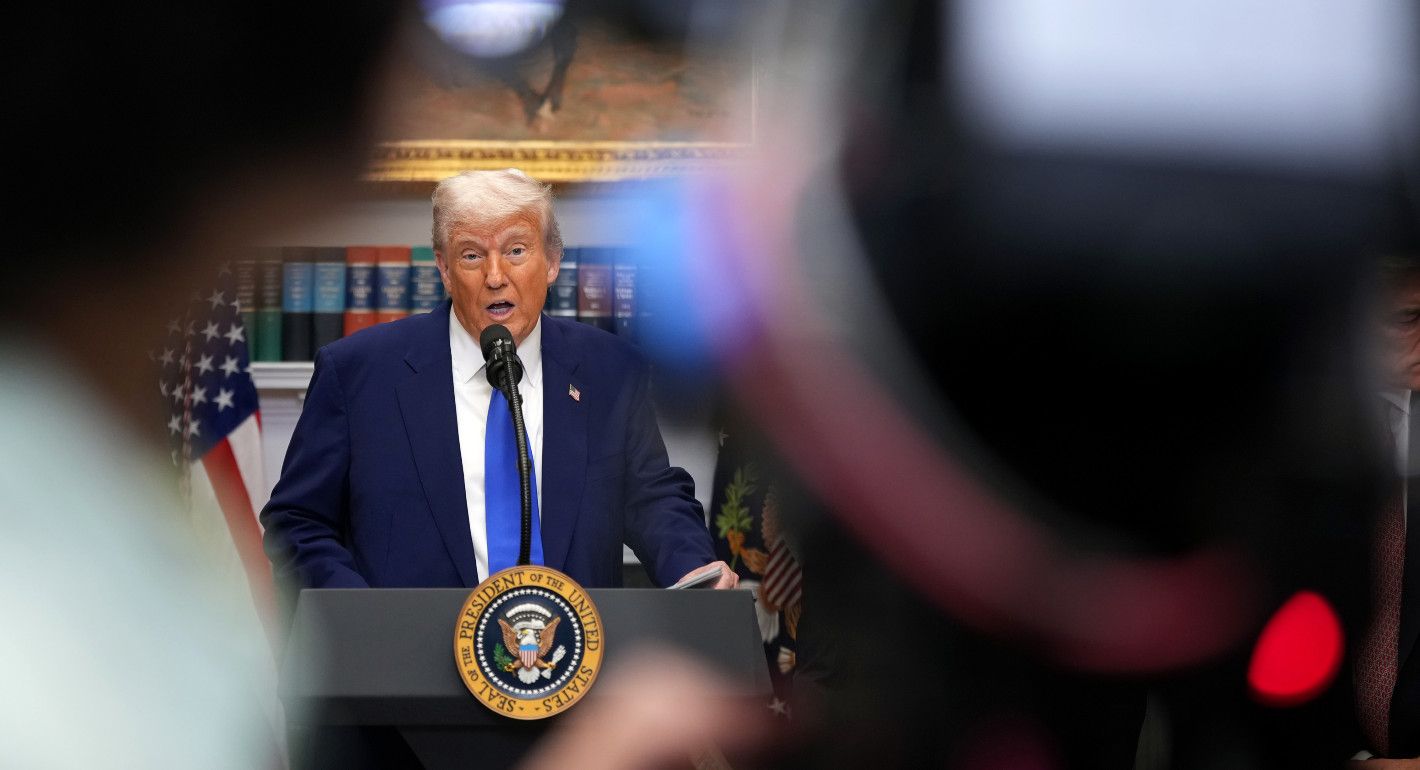The Trump administration’s policy approach toward higher education might be summarized as everything, everywhere, all at once. So its decision to suspend student visas—and to hint that far more restrictive policies are in the offing—likely provoked the same two words in university administration buildings throughout the country: “Now what?” With a series of salvos aiming at the infrastructure for government-funded research, curriculum, and more, the new approach poses a real and profound threat to the U.S. higher education system as it has emerged over the past century.
That threat is perhaps at its most severe at the fiscal level, where the carpet is being pulled out from a set of arrangements that were built with bipartisan support over many decades. The move on student visas is likely less existential in a financial sense for most universities. But a permanent ban for specific institutions and a more general diminution of the flow of students from across the globe would hit a number of institutions very hard. And it is still potentially quite severe in its immediate effects, especially if the temporary bar turns into a long-term set of measures designed to restrict the number and kind of students admitted for study.
Most generally, the move augurs a new era in which what had been seen as a good thing is redefined as a risk to American security and a threat to American values. The attractiveness of U.S. higher education to international students has long been understood as a cornerstone of the country’s most successful and competitive industry and a source of strength, soft power, and revenue. Now it’s suddenly viewed with hostility and suspicion. The 180-degree shift among one pole in the country’s sharply divided political spectrum may not be easy to reverse.
Of course, the suspension of student visas is temporary, and the administration has promised a new policy soon. The effect of this move may be minimal in the short term. But there are two aspects that suggest far broader—if uncertain—implications.
First, compliance with the administration’s political positions may now be a condition for those who desire or require any official action—the specific inclinations of senior executive branch officials is now to shape who is allowed in. The promise of more social media vetting for individual student visa applicants, the harsh moves against international students who have protested Israel’s actions in Gaza, and the targeting of specific institutions that reject administration demands mean that the move is about more than combating espionage in technical fields, as the administration has stated.
In moving to revoke Harvard’s ability to host international students, Homeland Security Secretary Kristi Noem issued a jarringly strident statement that proclaimed, “It is a privilege, not a right, for universities to enroll foreign students and benefit from their higher tuition payments to help pad their multibillion-dollar endowments.” The specific stances that she emphasized were hostility to China and the administration’s extremely idiosyncratic approach to anti-Semitism. The latter approach is one that more than half of American Jews, the group supposedly being protected, not only oppose but also see as stemming from an administration itself headed by an antisemite, according to a recent survey. If applied evenly to visitors, the approach would require U.S. officials to turn back many Israeli leaders for their views.
Second, the policy is surrounded by enormous uncertainty. Pugnacious and shrill official statements make clear who the targets are but contain very few operational details. Indeed, there is no clear strategy or general policy—just a shifting set of attacks that seem motivated by the general sense that foreigners are suspect (some more than others) and higher education is a haven for coddled radicals. The federal task force on antisemitism that seems to be driving some moves is opaque in its operations, secretive in its activities, ambiguous in its evidentiary standards, and even shadowy in its membership. The approach seems more aimed at damaging the universities than to obtaining specific concessions.
Whether today’s bold statement will be struck down in court tomorrow also leads to an atmosphere of profound instability. Swift and sweeping moves are taken with unclear and even dubious legal bases, resulting in multiple lawsuits and maneuvers and uncertain results. And that uncertainty itself is a major problem for institutions and for individuals: A student wishing to study in the United States (or wondering if it is time to self-deport), a faculty member wondering about the effect of using the word “diverse” on a syllabus, or a biomedical research fellow writing a grant application all have to worry not only about today’s ambiguous rules but also what might be changed tomorrow.
In that sense, the murkiness is the message. Even if, in the end, formal change is minimal or reversed by the courts, the previously solid foundation of federal support for research and higher education is being replaced by sand.
Emissary
The latest from Carnegie scholars on the world’s most pressing challenges, delivered to your inbox.




